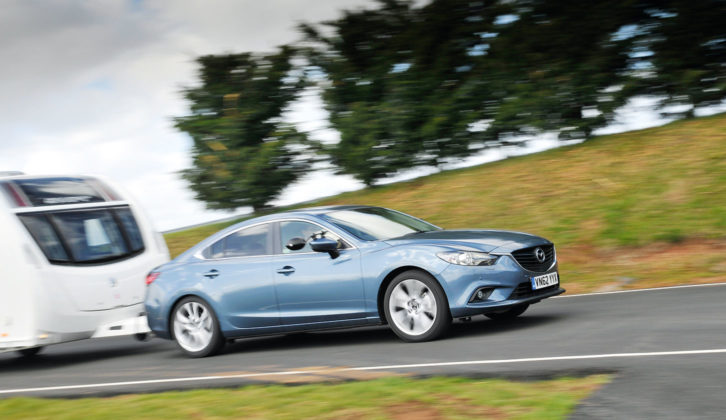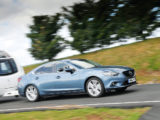If you were bitten by the caravanning bug last summer, or decided to buy your first van at the NEC show, welcome to touring – and towing. For some, towing is a necessary evil at either end of the fun bit. For others, it is a satisfying skill and all part of the experience. Safe towing doesn’t happen by chance. It’s not something you learn about while you are practising three-point turns in your teens – you have to get to grips with some new guidelines and principles to make towing enjoyable and stress-free.
This isn’t a complete list, but these are some of the most important things any tow car driver should know for safe towing.
- If you’re looking for one, our best caravan tow car guide can help you find the right towing vehicle for you
1 The tail should never wag the dog
You might have heard of the ‘85% rule’. Both major Clubs strongly advise that you tow a caravan weighing no more than 85% of your vehicle’s kerbweight, particularly when you’re new to towing.
This is not actually a legal requirement, so perhaps it’s better to call it a guideline, rather than a rule, but it is still really important.
Whenever you tow, you want the car to stay firmly in charge of the caravan, never the other way around. If the car weighs considerably more than the caravan behind it, you’re off
to a very good start.
Always stay within the car’s towing limit (check the model brochure or handbook) which could be higher or lower than the 85% match figure.
Think about noseweight, too (the weight the van applies to the towball). Your car will have a maximum noseweight. Aim to be close to this, not over it. A noseweight of 5-7% of the van’s weight makes for stable and safe towing.
Our guide to caravan weights can provide more information about this.
2 It’s not just weight that’s important, it’s where you put it
So, you’ve loaded up your new caravan for your first weekend away, dutifully abiding by the 85% guideline. But the caravan still seems to be wandering around and tugging at the back of the car. What’s gone wrong?
Chances are you’ve made a hash of loading the caravan. Don’t put anything heavy at the ends of the caravan, especially at the back, where a big weight can act like a swinging pendulum.
Heavy items should always be stored securely, low down and close to the axle. Items of medium weight can be placed further from the axle.
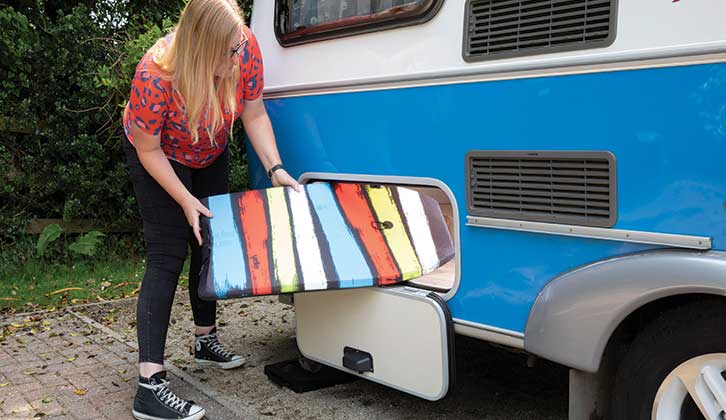
Only light things should be stowed away higher up, in the overhead lockers.
Depending on how it has been loaded, the same caravan at an identical weight can tow completely differently.
Caravans have a maximum payload for all the bits and bobs you need to take with you on holiday, so make sure that you don’t go over the limit.
3 Double-check that you are safely hitched up
Before you set off, there are certain key checks that you should always make.
The hitch should be securely attached to the towball. On the Al-Ko chassis used in most UK caravans, you will see a green button, but it’s worth winding the jockey wheel down a little, to show that the back of the tow car will lift with the hitch.
The breakaway cable (which applies the caravan’s brakes if it becomes detached) should be attached correctly, the jockey wheel should be raised and secured tightly in place, and the stabiliser bar (if fitted) needs to be lowered.
The electrics should be plugged into the car’s socket and the caravan’s handbrake should be off (after checking the car’s parking brake is on).
Always fit towing mirrors to your vehicle (and see our guide on how to choose the right towing mirrors if you need a hand here), so you can see down the sides of the van. It’s hugely important that you can see to make safe lane-changes and other manoeuvres.
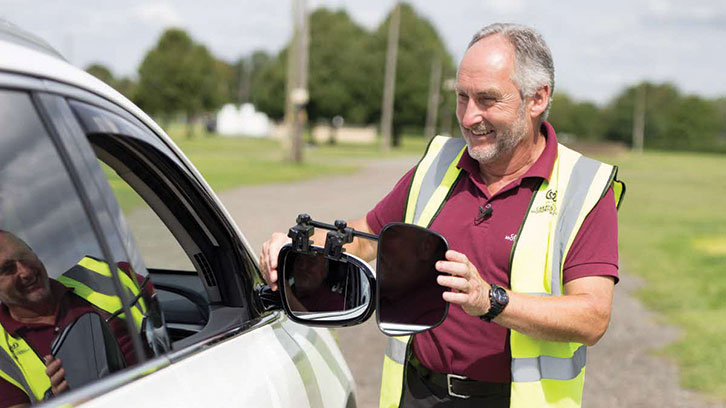
Before setting off, check that the indicators, the brake lights, reversing lights and tail lights on the van are all working.
If it helps, make a checklist that you tick off before driving away. If it’s good enough for airline pilots, it’s good enough for tow car drivers.
4 Speed limits are different when you are towing
Everybody knows that the speed limit is 70mph on the motorway, right? But not when you’re towing a tourer. Caravan speed limits are different – you shouldn’t be going over 60mph while towing, and if the weather is bad, it might be sensible to go slower than the limit.
On a dual carriageway with a limit of 70mph, 60mph is the maximum for a car and caravan. On a single carriageway with a 60mph limit, the maximum is 50mph. On other roads with a 50mph, 40mph, 30mph or 20mph maximum, the limit is the same, whether or not you are towing a caravan.
5 Learn to tow the easy way, not the hard way
The rules concerning who could tow what used to depend on when you passed your driving test. For better or worse, that changed in December 2021.
Whenever you passed your test, you can now tow trailers with a Maximum Authorised Mass of 3500kg (so long as the car you are driving has a high enough towing limit). There’s no longer any need to take a towing test before driving heavier car/van combinations.
But just because something’s legal, that doesn’t necessarily mean it’s safe or sensible. We would always strongly recommend that anyone who is new to caravanning should take a caravan towing tuition, whatever their age and level of driving experience might be.
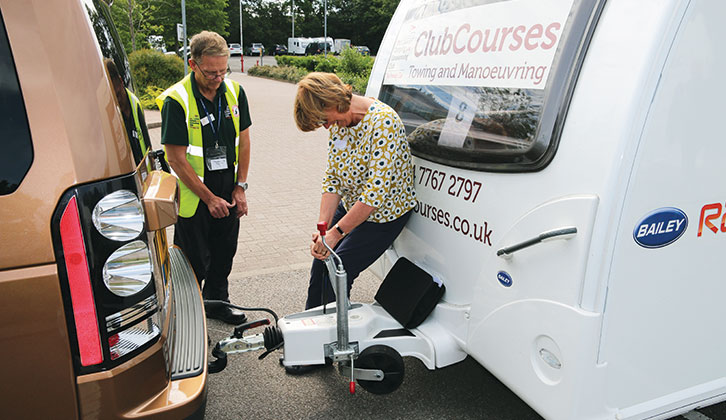
The Caravan & Motorhome Club and The Camping and Caravanning Club run courses that will show you how to hitch up, manoeuvre and stay safe on the road. C&MC courses start from £164, while C&CC training costs upwards from £160. A small investment in time and money will bring big benefits in terms of safety, confidence and peace of mind.
6 Motor movers aren’t cheating!
For many drivers, the most difficult part of towing will be reversing a caravan.
When you are new to the world of caravanning, steering onto a pitch can feel as hard as rubbing your stomach while patting your head and reciting the alphabet backwards.
Professional instruction can help, but for some, reversing will always feel like a chore.
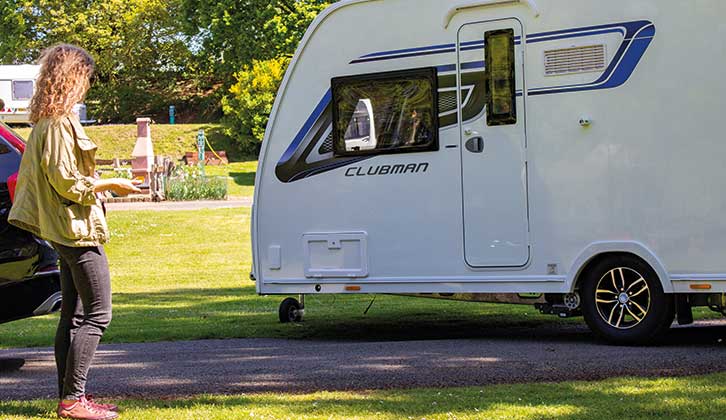
Motor movers use small motors connected by rollers to the caravan’s wheels, to manoeuvre the caravan into place. It’s so much easier than reversing, but some drivers see a mover as cheating.
Well, let them. You’re on holiday! Anything that helps to take the stress and strain away is worth it. The quicker you are pitched up, the sooner you’ll be relaxing with a cuppa and looking forward to the rest of your well-earned break. Take a look at our guide to the best caravan motor movers to help you find the right one for you.
Something else worth doing is ensuring your vehicle is protected when you’re away from it – having one of the best steering wheel locks can play a crucial role here.
If you’ve enjoyed reading this article, why not get the latest news, reviews and features delivered direct to your door or inbox every month. Take advantage of our brilliant Practical Caravan magazine SUBSCRIBERS’ OFFER and SIGN UP TO OUR NEWSLETTER for regular weekly updates on all things caravan related.
